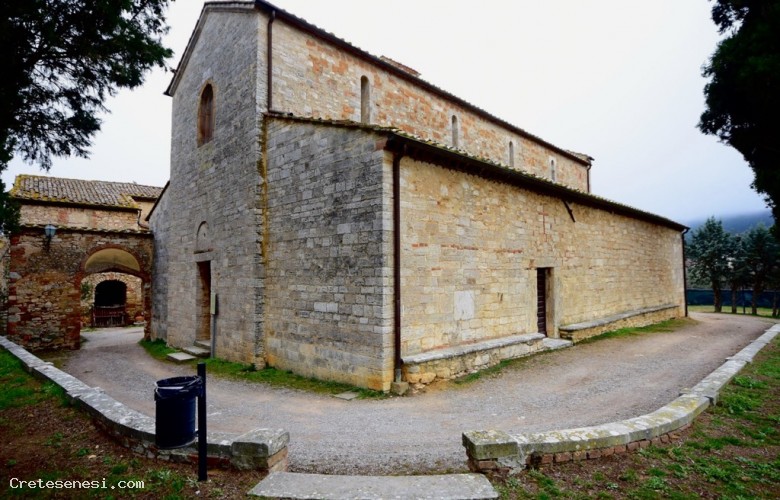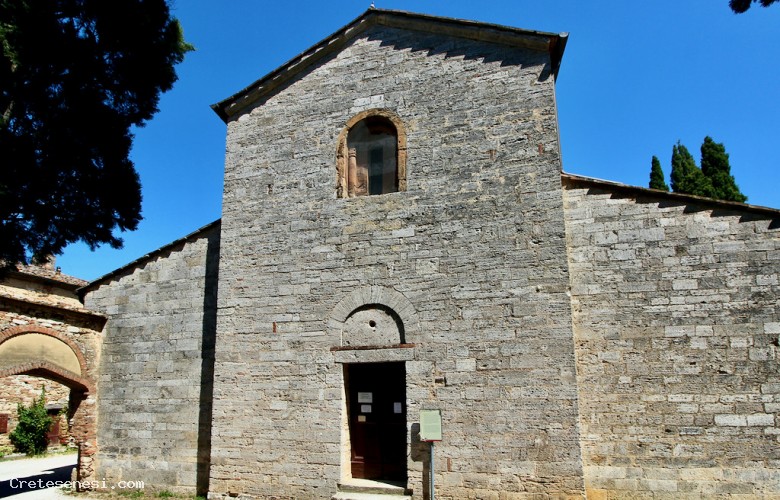Churches
Pieve di San Vittore
RAPOLANO TERME LISTEN THE AUDIO GUIDE
LISTEN THE AUDIO GUIDE.jpg)
.jpg)
.jpg)
.jpg)
.jpg)

.jpeg)

.jpeg)
The parish church of San Vittore is a sacred building located near the historic center of Rapolano Terme, on a hill surrounded by greenery. Oral tradition would trace the birth of the parish church of San Vittore back to the 4th century. and the proximity to ancient Etruscan-Roman baths, could even lead to suppose that this parish church was originally a pagan temple, but there is no concrete evidence of this. Furthermore, the proximity of the parish church to the ancient route of the Cassia Adrianea, prior to the swamping of the Valdichiana, could be connected to the name of the saint to whom the church is dedicated. It is in fact unusual that there are three places of worship dedicated to Milanese saints: Gervasio, Vittore and Materno, all lived between the third and fourth centuries. However, the first document in which the parish church of San Vittore is mentioned dates back to 1029, included in the list of border parishes, claimed by the two dioceses of Arezzo and Siena. The dispute, which lasted for centuries, was definitively resolved by Pope Honorius III in 1220, who definitively sanctioned the local jurisdiction of the Arezzo diocese. However, the parish of Rapolano has also always been linked to Siena: in the Middle Ages, in fact, many pievani came from Sienese families and the only fresco in the church, dating back to the 15th century, depicts Sant'Ansano, one of the patrons of the city who he holds the banner with the colors of the Balzana in his hand: the coat of arms of Siena. The church consists of three naves with a trussed ceiling that join a single central apse; apse characterized by a crown of hanging arches made from a single block of travertine. Inside there is a fragment of a fresco by a Sienese artist, active between the fourteenth and fifteenth centuries, as well as a sixteenth-century polychrome terracotta, depicting the Madonna and Child. On the particularly simple façade, there is a round portal and a single lancet window decorated with a single column on the left side.
The parish church of San Vittore is a sacred building located near the historic center of Rapolano Terme, on a hill surrounded by greenery. Oral tradition would trace the birth of the parish church of San Vittore back to the 4th century. and the proximity to ancient Etruscan-Roman baths, could even lead to suppose that this parish church was originally a pagan temple, but there is no concrete evidence of this. Furthermore, the proximity of the parish church to the ancient route of the Cassia Adrianea, prior to the swamping of the Valdichiana, could be connected to the name of the saint to whom the church is dedicated. It is in fact unusual that there are three places of worship dedicated to Milanese saints: Gervasio, Vittore and Materno, all lived between the third and fourth centuries. However, the first document in which the parish church of San Vittore is mentioned dates back to 1029, included in the list of border parishes, claimed by the two dioceses of Arezzo and Siena. The dispute, which lasted for centuries, was definitively resolved by Pope Honorius III in 1220, who definitively sanctioned the local jurisdiction of the Arezzo diocese. However, the parish of Rapolano has also always been linked to Siena: in the Middle Ages, in fact, many pievani came from Sienese families and the only fresco in the church, dating back to the 15th century, depicts Sant'Ansano, one of the patrons of the city who he holds the banner with the colors of the Balzana in his hand: the coat of arms of Siena. The church consists of three naves with a trussed ceiling that join a single central apse; apse characterized by a crown of hanging arches made from a single block of travertine. Inside there is a fragment of a fresco by a Sienese artist, active between the fourteenth and fifteenth centuries, as well as a sixteenth-century polychrome terracotta, depicting the Madonna and Child. On the particularly simple façade, there is a round portal and a single lancet window decorated with a single column on the left side.